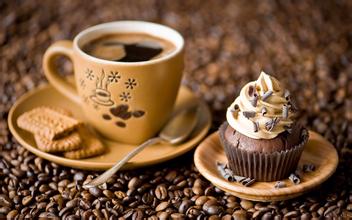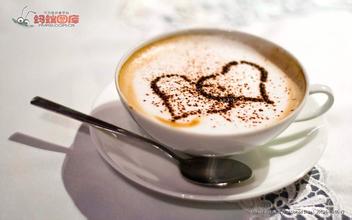Kona Coffee, Hawaii, USA introduces the treatment of boutique coffee in the Manoa Valley of Oahu.
Hawaii's coffee industry has to compete with the expanding tourism industry. Most coffee is grown on the slopes of MaunaLoa. Mauna Loa was originally a volcano located in the western part of the Kona region on the island of Hawaii. The coffee producing area is about 30 kilometers long and its growing areas are mainly concentrated in the north and south of the area. Coffee trees are planted in relatively desolate areas, but their soil is fertile and contains volcanic ash. Although it takes a lot of physical labor to start planting and it is difficult to manage, it is comforting that Kona's coffee trees (at least those growing above 90 meters above sea level) do not seem to be affected by any diseases and insect pests.
Real Kona coffee is indeed a treasure in the world and is not easy to find. The best Kona coffee is divided into three grades: ExtraFancy, Fancy and NumberOne. This third-class coffee is produced on manors and under natural conditions. Most of the coffee on the market that calls itself "Kona" contains less than 5% of the real Hawaiian Kona coffee. Another good Hawaiian coffee can be found in the United States-Hawaiian Kaj Farm Coffee (KaiFarms).
The smell of Hawaii
In Hawaii, you can watch the fiery sunset sink into the red-orange sea, feel the fresh air filled with the scent of flowers, and sit by the sea and drink a cup of Kona coffee. I'm afraid there is no place in the world that can offer you such enjoyment.
The earliest settlers in Hawaii arrived here between 300 and 400 AD, and historians speculated that they were from the Marcos Islands. People are scattered into different tribes that live on the island and are led by hereditary chiefs. The earliest Hawaiian residents created the rich musical culture of Hawaii, although not many words have been preserved.
Europeans discovered Hawaii by accident. They were looking for a legendary passage to the east where spices were produced, but they found the richest pearl in the Pacific Ocean. A captain named James Cook landed at Kauai in 1778 to resupply his ship. He encountered severe cold and storms on his way back, so he had to return to Hawaii at the beginning of the next year and anchor on a beach in Kona. Since then, the Hawaiian islands have become an important port of call on world trade voyages. The chiefs of Hawaii exchanged sandalwood, the island's specialty, for weapons, goods and livestock with passing ships. From the 1820s, Western religion began to spread widely on the island, and many churches built at that time are still in use today.
With the development of tourism in Hawaii, tourists can visit coffee farms, see or participate in various processes such as coffee harvest, coffee bean processing, baking and grinding, and make a cup of coffee that really belongs to them. In the Kona region, there are about 600 independent coffee farms, most of which are small family farms, usually between 18 and 42 acres. Kona Coffee earns more than $10 million a year for these coffee farms.
Kona coffee has always been grown at home. At first, only men were allowed to work in the coffee garden, and later women joined in. This kind of family production of Hawaiians preferred to rely on the efforts of their families rather than hiring workers to work, so it was normal for Hawaiians to have eight or nine children at that time. Since then, new immigrants from the Philippines, the United States and Europe have come to Hawaii to engage in the coffee industry. Over time, Hawaii has formed a social atmosphere that centers on family culture and is easy to absorb foreign cultures. and make it a major feature of Hawaii.
Hawaii is also a paradise for tasting and buying coffee. Each island has several unique places for tourists and local residents to taste and buy coffee, including comfortable and warm shops and comprehensive centers to introduce coffee knowledge.
A noble and ancient bloodline
The real Hawaiian Kona coffee makes people enjoy the unique pleasure and leads you slowly into the detached state of tasting coffee. And this comes entirely from the oldest Arabica coffee tree.
Hawaii is the only state in the United States that grows coffee, which is grown on the five major islands of the Hawaiian Islands: Oahu, Hawaii, Maui, Kauai and Moroca. Coffee from different islands also has its own characteristics. Kauai coffee is soft and smooth, Muroca coffee is high in mellow and low acidity, and Maui coffee is moderately acidic but has the strongest flavor. Hawaiians are extremely proud of their 100% home-grown Arabica coffee beans.

Important Notice :
前街咖啡 FrontStreet Coffee has moved to new addredd:
FrontStreet Coffee Address: 315,Donghua East Road,GuangZhou
Tel:020 38364473
- Prev

High quality and balanced Peru: introduction of Organic Coffee to Peruvian Coffee producing countries
Peru: organic coffee flavor and taste characteristics: high quality and balanced, palatable acidity, can be used for mixed drinks, Peruvian coffee does not have a long history, but as a rising star, Peruvian coffee is gradually opening up its popularity and entering the international market. Peru is located in western South America, with a coastline of 2254 kilometers. The Andes runs from north to south, and the mountains account for 1% of the country's area. it belongs to the tropics.
- Next

Jamaica Blue Mountain Coffee introduces boutique coffee treatment methods St. Thomas producing area of the Caribbean
In addition, the processing and production of Blue Mountain Coffee is also very elegant. Strict and detailed standards have been established for processing, baking and packaging, and there are regulations on what kind of organic fertilizers are needed during the growth period. All are harvested manually at harvest time. Jamaica is also the last country to still transport coffee in traditional wooden barrels. Only through this series of harsh standards set by the Jamaican Coffee Industry Authority.
Related
- Does Rose Summer choose Blue, Green or Red? Detailed explanation of Rose Summer Coffee plots and Classification in Panamanian Jade Manor
- What is the difference between the origin, producing area, processing plant, cooperative and manor of coffee beans?
- How fine does the espresso powder fit? how to grind the espresso?
- Sca coffee roasting degree color card coffee roasting degree 8 roasting color values what do you mean?
- The practice of lattes: how to make lattes at home
- Introduction to Indonesian Fine Coffee beans-- Java Coffee producing area of Indonesian Arabica Coffee
- How much will the flavor of light and medium roasted rose summer be expressed? What baking level is rose summer suitable for?
- Introduction to the characteristics of washing, sun-drying or wet-planing coffee commonly used in Mantenin, Indonesia
- Price characteristics of Arabica Coffee Bean Starbucks introduction to Manning Coffee Bean Taste producing area Variety Manor
- What is the authentic Yega flavor? What are the flavor characteristics of the really excellent Yejasuffi coffee beans?

